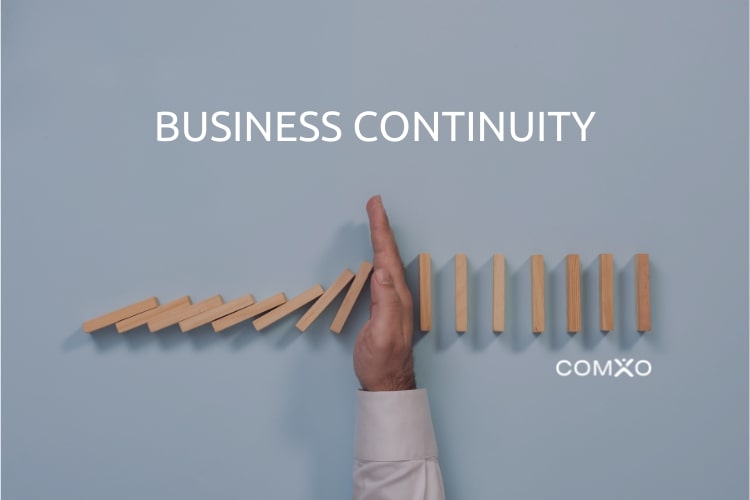We asked specialist HR Consultants Kane HR to write our guest blog this month, covering everything you need to know about TUPE and the considerations when outsourcing.
Robert Burden, Managing Consultant dives in with an overview, the pros and cons, and some top tips for managing TUPE effectively.
TUPE stands for the Transfer of Undertaking (Protection of Employment) Regulations. Its purpose is to provide protection to employees who are transferring from one employer to another because of a business transfer or service provision change (SPC). It safeguards employee’s rights when there is a transfer of a business or service from one organisation to another and means that the grouping of employees concerned have a legal right to automatically transfer from one service provider to another on their existing terms and conditions of employment and with all their existing employment rights and liabilities intact, including their continuous service.
Under TUPE, both the current employer (“Transferor”) and receiving employer (“Transferee”) have a legal obligation to inform and consult with either elected employee representatives or a recognized trade union, if there is one present. Only in the event where there are fewer than 10 employees (and in the absence of elected representatives or a recognised trade union), should an organisation consider consulting directly with the individuals affected.
It’s important to remember that TUPE is a legal statute, therefore, even if it may seem that a business service provider can provide their services more efficiently, if the transfer falls within scope of the activities below, then TUPE is still likely to apply, and both organisations have a legal obligation to inform and consult. The following activities will indicate that TUPE is likely to apply.
- The activities that are currently being provided by a client are to be provided by a third-party provider. This is more commonly known as outsourcing.
- Activities currently provided by a contractor to a client are to be provided by a different third-party supplier to the same client, known as ‘contractor to contractor SPC’.
Options when handling TUPE
When choosing an outsourced provider, organisations are often looking for an effective and efficient solution, which can mean when TUPE applies there may be more staff currently doing the job than required if the work is to be outsourced.
In such instances, it is first important to establish which internal employees fall within the scope of the undertaking i.e. "fundamentally the same" as the activity to be carried out by the outsourced provider, it’s important to do this to prevent employees being assigned to a TUPE transfer who should not be affected.
Second is to understand your legal obligations to inform and consult regarding the transfer, it’s important to recognise that if found to have failed in fulfilling this obligation, liability could be both joint (i.e. shared between the transferee and transferor) and individual if taken to a tribunal.
Crucially, it is important to remember that any dismissal where the sole or principal reason is the transfer itself will be automatically unfair. However, there are of course practical and commercial considerations, that give options to handling structural changes during TUPE in a lawful, fair and practical way for all parties. One of these, is if the transferee envisages that there may be a potential redundancy situation by reason of economic, technical or organisational factors (ETO), and more on this is outlined further below.
In some cases, prior to TUPE it may be appropriate to offer staff members redeployment opportunities to other business areas or departments. Keep in mind that employees have a legal right to transfer, therefore, they may reject any offers.
As the current employer, there may be extenuating circumstances that result in a decision to provide individuals with an opportunity to exit from the business prior to the TUPE taking place, and generally this would form part of a settlement agreement. If considering this approach, it’s always best to seek independent employment law advice, as this wouldn’t mitigate from your obligation to inform and consult regarding the transfer.
If considering this approach, there is always the risk that the transferee could be liable for an unfair dismissal claim as they have not been privy to the agreement. In such cases, it may be an acceptable decision for all three parties (employee, transferor and transferee) that the employee does not transfer, and therefore a tripartite settlement agreement could be introduced to provide the necessary protection for all parties involved.
The commercial bits
When considering outsourcing arrangements, it's crucial to anticipate the potential impact of TUPE on the financial aspects of the agreement. One common strategy involves the inclusion of indemnification clauses in the commercial arrangement between the outsourcing organisation and the service provider.
Indemnification in the context of TUPE essentially means that the outsourcing organisation agrees to compensate the service provider for any additional costs incurred due to the transfer of employees under TUPE regulations. This can include expenses related to maintaining existing employment terms, addressing potential legal challenges, and handling administrative complexities associated with the transfer.
While the necessity of such indemnification clauses may not be immediately apparent, seasoned service providers recognise them as an essential aspect of risk management. They provide a safety net for service providers, ensuring that unexpected costs arising from TUPE do not become a financial burden that jeopardises the viability of the outsourcing arrangement.
It's important for both parties to engage in open and transparent discussions during the negotiation phase of the outsourcing agreement. Clearly defining the scope and limits of indemnification clauses, as well as detailing the specific scenarios under which indemnification would apply, lays the foundation for a successful and sustainable outsourcing relationship.
Redundancy situations?
We have covered that dismissal of an employee for the sole or principal reason of TUPE is unfair. However, certain circumstances may arise where the new service provider needs to make changes that could result in redundancies. This is where ETO reasons come into play. These changes are generally outlined within the measures of the new service provider, as part of the initial TUPE consultation process. Depending on what is agreed with the current employer, redundancy consultations could commence prior to the transfer taking place, with the view that redundancies are effective from the first day of an individual’s employment with the new service provider. Alternatively, the service provider may transfer employees, and then proceed with redundancy consultations afterwards.
ETO reasons refer to economic, technical, or organisational factors that entail changes in the workforce. These factors may necessitate alterations to the employment structure for the continued viability of the service that’s being provided. Here's a breakdown of each:
Economic Reasons: This involves situations where the employer faces financial challenges or restructuring to ensure the sustainability of the business. Cost-cutting measures, mergers, or market-driven changes fall under this category.
Technical Reasons: Changes in technology or the methods used to carry out work can trigger the need for workforce adjustments. This could include the introduction of new machinery or systems that render certain roles obsolete.
Organisational Reasons: Structural changes within the organisation, such as a shift in management or a restructuring of departments, might necessitate workforce realignment.
In addition to the above, it is very common for an employee’s place of work to change following a TUPE transfer. Where the change in location is significant this may also fall within scope of an ETO reason.
Where redundancy by reason of ETO could be a consideration, relevant legal advice should always be sought to ensure the correct consultation process is applied to avoid any potential unfair dismissal claims.
Positives of TUPE transfers for employees
• Preservation of terms - One of the key advantages for employees in a TUPE transfer is that their existing terms and conditions of employment are preserved.
• Job security -TUPE is designed to protect employees from losing their jobs because of a service transfer.
• Continuity of employment - TUPE ensures continuity of employment, meaning that the length of service with the current employer is usually carried over to the service provider.
• Protection against Unfair Dismissal - Employees transferred under TUPE are protected against unfair dismissal solely because of the transfer.
Negatives for employees in TUPE transfers
• Uncertainty and change - TUPE transfers often come with a degree of uncertainty and change. Employees may need to adapt to a new working environment, management style, and potentially different policies and procedures.
• Potential for redundancy - In certain situations, the service provider may identify ETO reasons that lead to redundancies.
• Integration challenges - Integration into a new culture and structure can be challenging. Employees may face difficulties adapting to new processes, procedures, and colleagues.
• Differences in employee benefits - While TUPE aims to preserve employment terms, there may be variations in benefit packages between the old and new employers.
• Limited control over the transfer - Employees have no direct control over the decision to transfer, and the process is often driven by the employers involved.
What if an employee doesn’t want to transfer?
Where there are employees who do not wish to transfer to the new service provider, they are entitled to refuse to do so. However, unless the individual can be redeployed, this would mean that their employment with the transferor comes to an end at the date of the transfer itself. Generally, the employee is not treated as having been dismissed, but having resigned. It is important to note that there are certain circumstances in which an employee could claim unfair dismissal, so it may be necessary to seek further advice if in this situation.
Although there is no specified manner in which an employee must refuse to transfer, it is sensible for the transferor to obtain the employee's refusal in writing, by way of the individual opting out of the transfer process.
Top Tips for managing TUPE effectively:
- Understand the situation as early as possible:
Early awareness of an impending TUPE transfer is crucial for effective planning and communication. Understanding the scope, reasons, and potential impact allows for better decision-making and minimizes uncertainty among employees. - Seek HR and Legal Advice:
TUPE regulations are complex, and legal nuances can significantly impact the process. Seeking professional advice from HR and legal experts helps ensure compliance with UK Employment Law and provides guidance on best practice. - Prepare a plan:
A well-thought-out plan is essential for a smooth TUPE transfer. It helps anticipate challenges, allocate resources effectively, and ensures that key tasks are executed in a logical sequence. - Obtain / Produce ELI (Employee Liability Information):
Acquiring accurate and detailed information about the employees who will be transferring is crucial for planning and addressing potential issues. The ELI includes essential details about employment terms, contracts, and potential liabilities – legally this should be provided to the transferee no less than 28 days before the transfer date. - Ensure you have plenty of time planned for consultations:
Adequate time for consultations is vital for addressing employee concerns, providing information, and facilitating a smooth transition.
In summary, managing TUPE effectively requires a proactive and well-organised approach. By understanding the situation early, seeking professional advice, preparing a comprehensive plan, obtaining essential information, and allowing ample time for consultations, you can minimise the impact on employees and navigate the TUPE process with transparency and efficiency.
If you'd like to learn more about outsourcing your switchboard, connect with our team at wearehere@comxo.com.
This is for information and guidance only, please always seek professional HR and legal advice.





